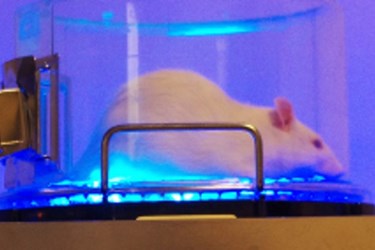Swapping The Little Blue Pill For Blue Light To Treat ED

Swiss scientists have developed a novel system for treating erectile dysfunction (ED) that uses gene therapy and a blue light. They suggest that the solution might provide more reliable and consistent results than currently used medications.
The group’s erectile optogenetic stimulator (EROS) works by injecting a gene construct into the erectile tissue. Exposing the gene construct to blue light triggers a reaction that “allows voltage-dependent calcium channels to close, thereby reducing calcium levels in the cells, which in turn relaxes muscle cells and increases blood flow to the erectile tissue,” according to a press release issued by the Swiss university ETS Zurich.
The team led by Martin Fussenegger, a professor in the Department of Biosystems Science and Engineering at ETS Zurich, recently published results of a study testing the process on male rats. It found that the blue light caused erections in most cases.
“Photostimulated short-circuiting of complex psychological, neural, vascular and endocrine factors to stimulate penile erection in the absence of sexual arousal may foster novel advances in the treatment of ED,” the researchers wrote in the study abstract.
Drugs such as Viagra only work to sustain an existing erection, not trigger one, the ETS Zurich press release points out. Furthermore, many patients are not suitable candidates for pharmaceutical ED treatments because of heart conditions. EROS could solve both these issues.
While the system has only been tested on rats, Fussenegger is confident that the technology will prove effective in humans, as well.
“The system of an erection is very similar across all mammals. Even Viagra works on rats. It prolongs the erections intensity, just as it does in humans,” he said in the press release.
Fusseneger and his team have been working on EROS for the past four years and hope to continue with the technology into human trials in the near future.
“Before it can be used as a treatment, it requires highly expensive clinical tests. We are actively looking for partners to put our technology into clinical practice,” Fussenegger added.
ED is most common in patients over 60, though a recent study showed an increased prevalence of ED among patients under 40 who had a much lower rate of comorbid conditions.
Image source: Prof. M. Fussenegger/ETH Zurich
